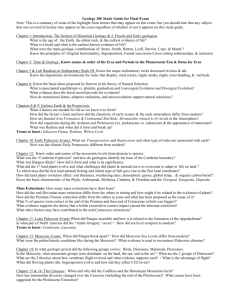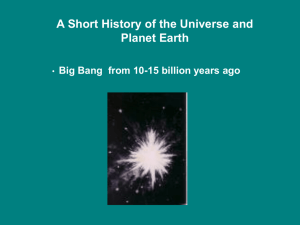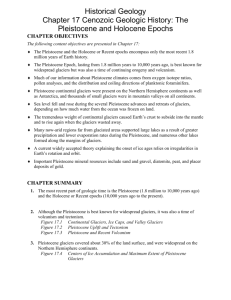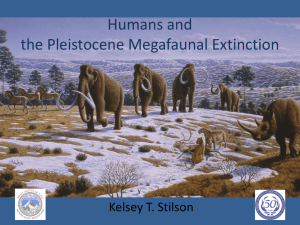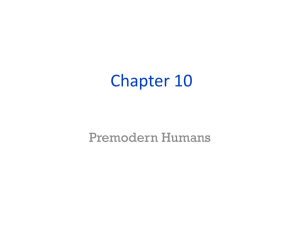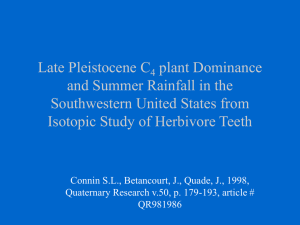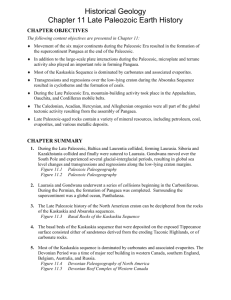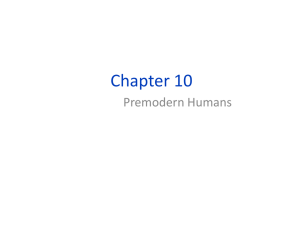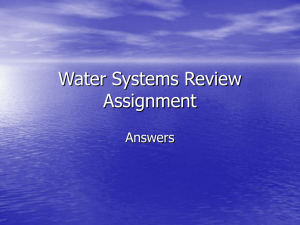Figures and Tables from Chapter 5
advertisement
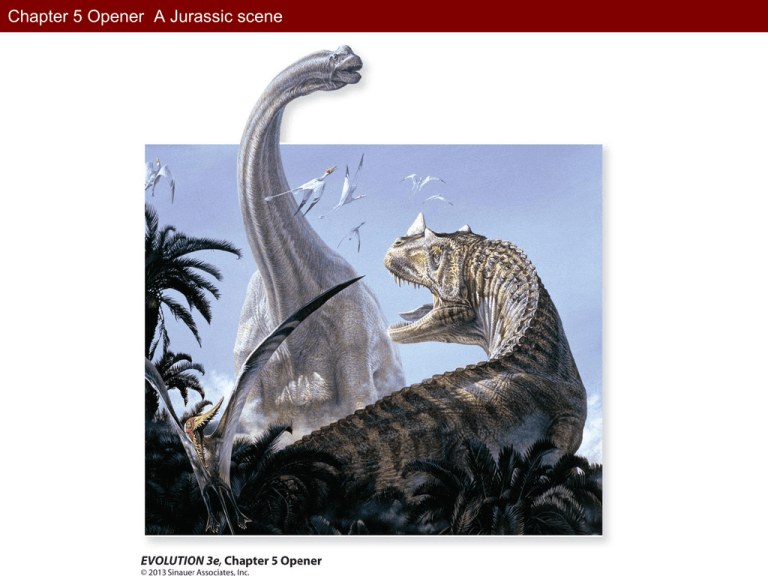
Chapter 5 Opener A Jurassic scene Figure 5.1 The approximate timing of some of the events in the early history of Earth and life Figure 5.2 The sequence and structure of the catalytic RNA, a ligase Table 5.1 Six major transitions in the history of evolution leading to higher-level formation, or groups Figure 5.3 (A) Stromatolites formed by living cyanobacteria in Shark Bay, Australia. (B) A 3 billionyear-old stromatolite from Western Australia has the same structure as modern stromatolites Figure 5.4 Some major branches of the tree of life Figure 5.5 A comprehensive tree of life Figure 5.6 Some Proterozoic fossils Figure 5.7 A phylogeny of major eukaryotic lineages Figure 5.8 Members of the Ediacaran fauna Figure 5.9 Two animal groups that first appeared during the Cambrian explosion Figure 5.10 Cambrian vertebrates Figure 5.11 (A) A choanoflagellate. (B) A sponge, with a close-up showing choanocytes Figure 5.12 An estimate of relationships among some animal phyla, based on the sequences of multiple genes Figure 5.13 Ammonoids and nautiloids Figure 5.14 Extinct Paleozoic classes of vertebrates Figure 5.14 Extinct Paleozoic classes of vertebrates Figure 5.15 The phylogeny and Paleozoic fossil record of major groups of terrestrial plants and their closest relatives among the green algae (Chlorophyta) Figure 5.16 Paleozoic vascular plants, portrayed at different scales Figure 5.16 Paleozoic vascular plants, portrayed at different scales Figure 5.17 The distribution of land masses at several points in geological time Figure 5.18 Features of marine predators and prey that escalated during and after the “Mesozoic marine revolution” Figure 5.19 Seed plants Figure 5.20 Some fossil insects Figure 5.21 Phylogenetic relationships and temporal duration (thick bars) of major groups of amniote vertebrates Figure 5.22 Some Mesozoic reptiles Figure 5.22 Some Mesozoic reptiles Figure 5.23 The great diversity of dinosaurs Figure 5.24 Multituberculate mammals resembled rodents, but had blade-shaped premolar teeth Figure 5.24 Multituberculate mammals resembled rodents, but had blade-shaped premolar teeth (Part 1) Figure 5.24 Multituberculate mammals resembled rodents, but had blade-shaped premolar teeth (Part 2) Figure 5.25 A phylogeny of living groups of mammals, based on DNA sequence data Figure 5.26 The giant ground sloth Megatherium was a Pleistocene representative of the Xenarthra Figure 5.27 Proboscidea, the order of elephants, has only two living genera, but was once very diverse Figure 5.28 Pleistocene glaciers lowered sea level by at least 100 meters, so that many terrestrial regions that are now separated by oceanic barriers were connected Figure 5.28 Pleistocene glaciers lowered sea level by at least 100 meters, so that many terrestrial regions that are now separated by oceanic barriers were connected Figure 5.28 Pleistocene glaciers lowered sea level by at least 100 meters, so that many terrestrial regions that are now separated by oceanic barriers were connected (Part 1) Figure 5.28 Pleistocene glaciers lowered sea level by at least 100 meters, so that many terrestrial regions that are now separated by oceanic barriers were connected (Part 2) Figure 5.29 Different rates of northward spread of four North American tree species from refugia after the most recent glacial episode Figure 5.29 Different rates of northward spread of four North American tree species from refugia after the most recent glacial episode Figure 5.30 A comparison of the current possible mass extinction with the five major mass extinctions of the past Figure 5.30 A comparison of the current possible mass extinction with the five major mass extinctions of the past
